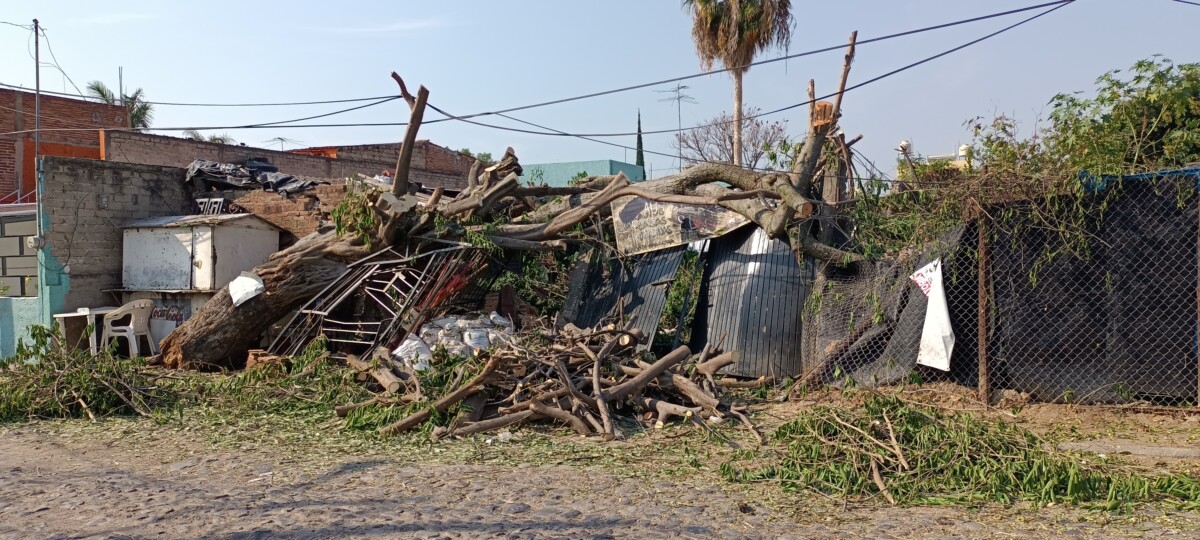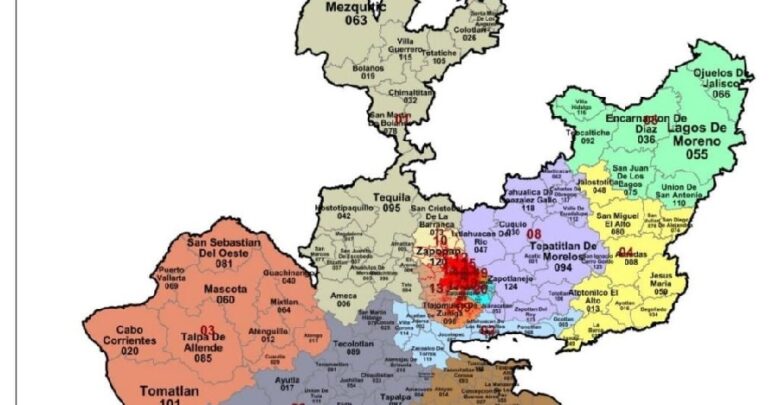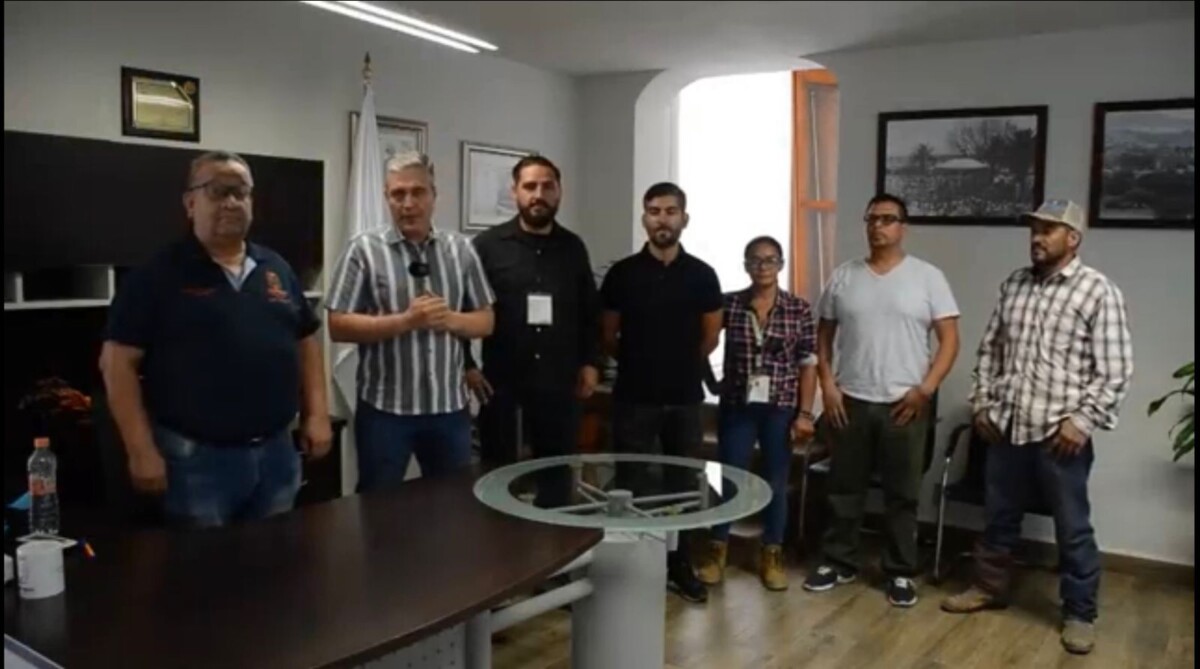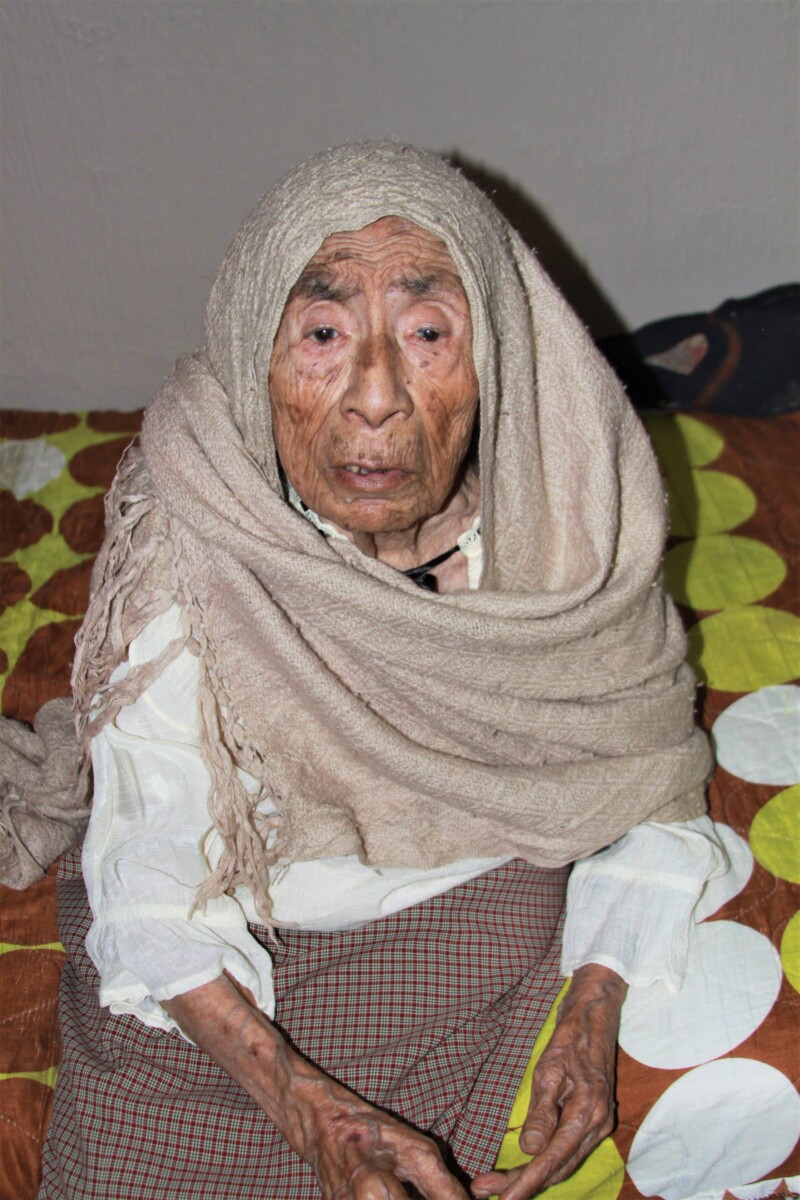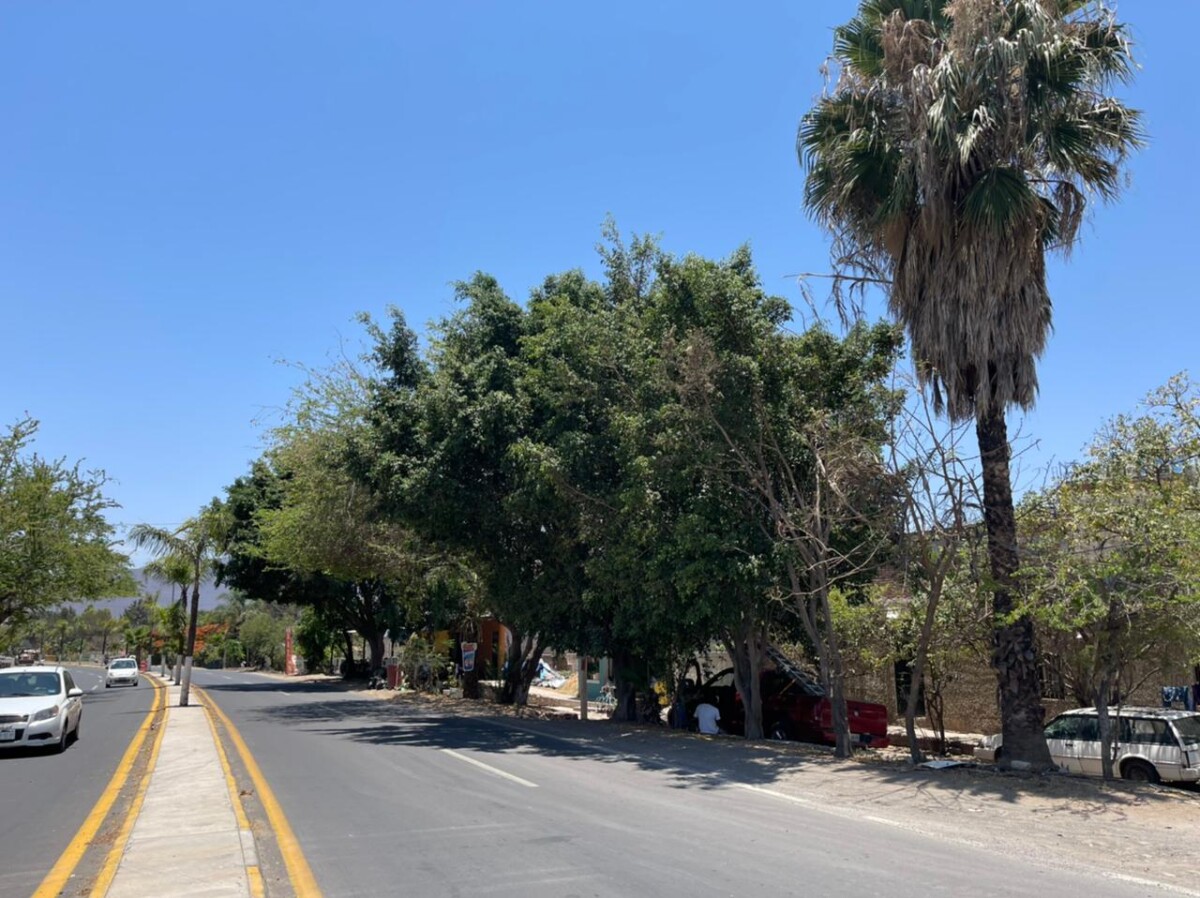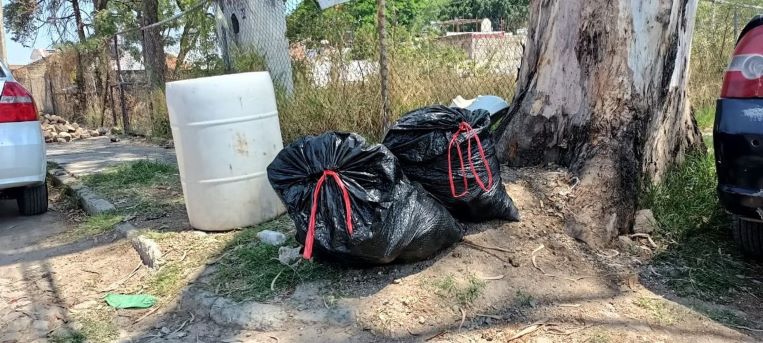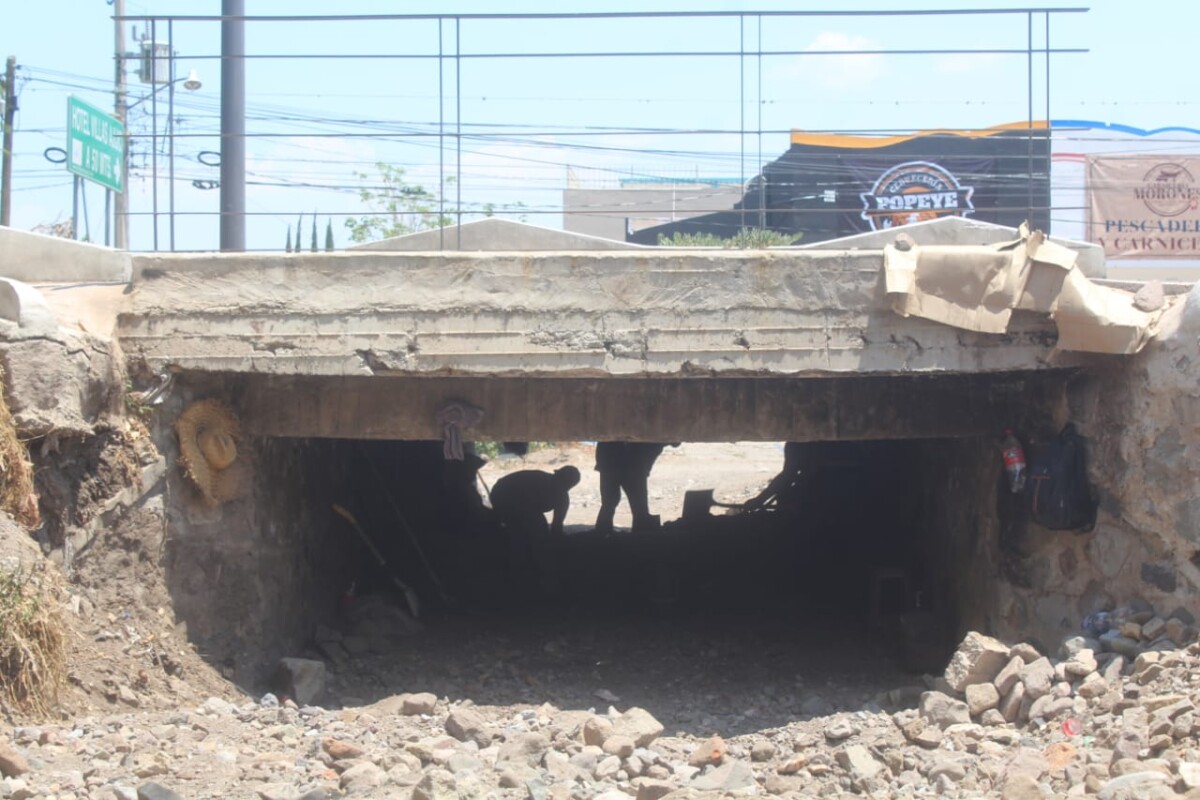municipio
Martha Alcaraz is recognized for more than 40 years of teaching service
Martha Alcaraz at the moment she received the «Manuel Altamirano» award from the Ministry of Public Education. Photo: Courtesy.
Héctor Ruiz Mejía (Jocotepec).- A teacher from Jocotepec received state recognition for her more than 40 years of service in education.
Martha Yolanda Alcaraz Ramírez, the coordinator of preschool education for the municipality of Jocotepec, received the «Ignacio Manuel Altamirano» award from the Federal Education System last Sunday, May 15, during the commemoration of Teacher’s Day.
The award was presented to her by the Governor of Jalisco, Enrique Alfaro Ramírez, and the head of the Jalisco Ministry of Education (SEJ). A total of 1,341 teachers statewide were recognized at the event for having more than 40 years of service.
Alcaraz Ramírez, who assumed the position of coordinator in 1989, said she was pleased with the work that has been done in the municipality at the preschool level, and she appreciated the recognition of her long career as an educator, as well as all the other teachers in the state.
«I want to extend special recognition to all the educators who work to overcome all the problems that have arisen, especially in these times of pandemic,» she said.
In closing, Alcaraz Ramírez told attendees that at 59 years of age, she still has a lot of energy to continue with such important work and that although she is eligible to retire, she assured them that «as long as the body is willing,» she will continue to work in the classroom.
The «Ignacio Manuel Altamirano» award, given to teachers with more than 40 years of service, consists of a gold medal, remuneration and a letter of recognition signed by the President of the Republic.
Translated by Rebecca Zittle
Rain in Chapala left five trees down and a water well blocked
Affectations caused by the guamúchil tree that fell due to the strong winds in Miguel Martínez street in the municipal headwaters. Photograph: Jazmín Stengel.
Jazmín Stengel (Chapala).- Winds of over 50 kilometers per hour in Ajijic and more than 70 (about 43 MPH) in Chapala were recorded for almost 15 minutes during the first rain of the season, which occurred on May 14, around 7:30 pm, according to Civil Protection and Firefighters of Jalisco.
According to reports from the director of Fire and Civil Protection in Chapala, Antonio Lorenzo Salazar Guerrero and the Municipal System of Potable Water and Sewage (SIMAPA), the result of the first rain in the municipality of Chapala was five fallen trees, damage to power lines and obstruction of water well number three.
Of the five trees, two fell in the Atotonilquillo delegation, one at the entrance on the Santa Rosa – La Barca highway and the second at the exit to Juanacatlán, damaging a light pole and telephone cables, which have already been repaired.
Another tree, almost 15 meters (50 feet) high, fell in La Floresta, a subdivision of Ajijic, blocking the road for almost an hour. The Fire and Civil Protection Departments removed it completely.
In the municipal capital, on Emiliano Zapata Street, a tree collapsed and took the perimeter fence of the neighboring land. On Miguel Martinez Street a guamúchil tree fell on the niche of the Virgin of Guadalupe and the gate of house number 480-A, taking down two walls and a metal sign.
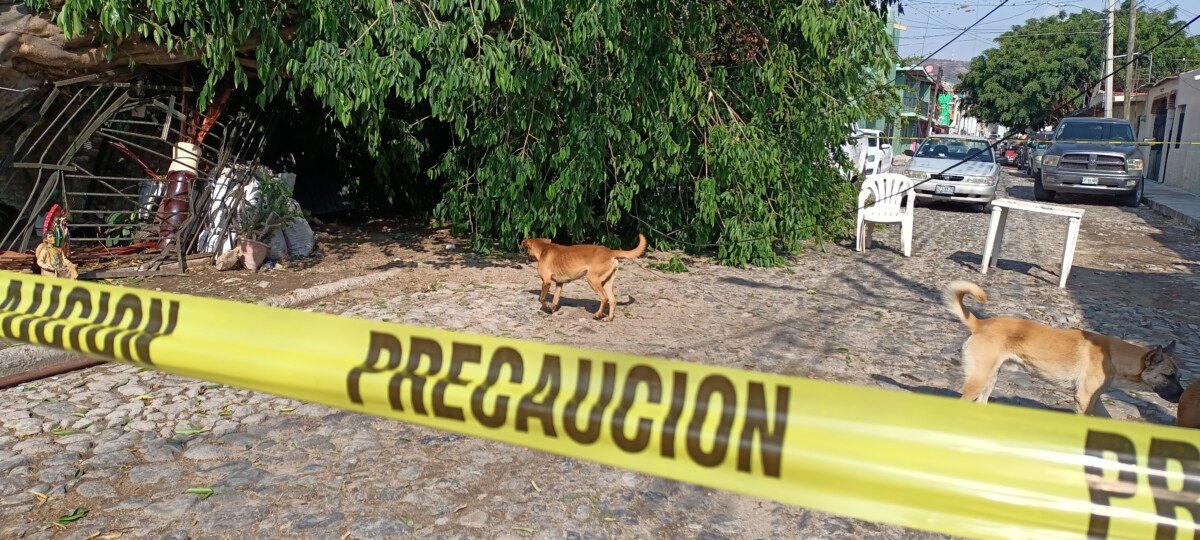
Miguel Martínez street was blocked on Sunday 15 after the strong winds. Photograph: Jazmín Stengel.
Firemen and Civil Protection promised Eliba, owner of the property, that members of the Urban Development Department would come to assess the damage, but a week after the incident they still have not shown up.
In addition, water well number three, located on Teofilo Silva Street, was clogged with sediment, to the extent that only four liters of water per second could be extracted, when on a regular basis it gave 25 liters per second.
At the close of this edition, SIMAPA personnel were re-drilling the well to stabilize the water supply in the Las Redes and Barrio Nuevo subdivisions, located northeast of the municipal capital.
The effects of the rain were also felt in other areas. In school 1066 of Las Redes Chapala, damage was reported to a shade netting structure that was also damaged by the strong winds of the weekend, and was removed by Urban Planning personnel, after an assessment of the structure by Firefighters and Civil Protection.
«Having a municipality rich in green areas also entails risks,» explained Salazar Guerro. Neither Fire and Civil Protection, nor the Directorate of Ecology have conducted a total study of trees in the municipality, to identify how many of them are sick and at risk of collapsing.
Typically, upon receiving a report, the Fire Department and Civil Protection go to the site to diagnose the tree and determine its condition. For this reason, the director of Civil Protection made a request to the public to report to them any type of anomaly in trees in their gardens or public spaces.
Translated by Christalle Dalsted
Proposed changes for Jalisco electoral map
The change is due to the decrease in population in the ZMG and growth in municipalities of Jalisco outside of the ZMG . Photo: Internet.
Editorial Staff.- The new district map proposed by the National Electoral Institute (INE) for the Lake Chapala region for 2022 proposes the division of the municipalities bordering Lake Chapala into electoral districts two, four and eight. The proposal is a result of the decrease of the population in districts of the Metropolitan Zone of Guadalajara (ZMG) and the growth of municipalities such as Ixtlahuacán de los Membrillos. Jalisco will still have 20 state and federal districts.
Chapala would be located in district two along with Jocotepec, Ixtlahuacán de los Membrillos, Poncitlán, Ocotlán, Zacoalco de Torres, Acatlán de Juárez and Villa Corona.
District four would consist of Jamay, La Barca, Degollado, Atotonilco el Alto, Ayotlán, Jesús María, San Diego de Alejandría, San Julián, San Miguel el Alto, Jalostotitlán and Arandas.
District eight will be made up of Tototlán, Zapotlán del Rey, Tepatitlán, Ixtlahuacán del Río, Zapotlanejo, Acatic, Yahualica de González Gallo, Mexticacán, Valle de Guadalupe, San Ignacio Cerro Gordo and Juanacatlán.
The proposal was delivered to the political parties accredited in the Surveillance Commissions and the local Electoral Institutes for their analysis and observations, which will be submitted for the consideration of the General Council of INE.
The project began in 2021 and will conclude in 2023 prior to the 2023-2024 electoral period.
Translated by Elisabeth Shields
Police thwart the extortion of a San Antonio Tlayacapan family
The family was helped by officers to locate the child. Photo: Attorney General’s Office. Photo: Internet.
Editorial Staff.- State police officers in San Antonio Tlayacapan, in the municipality of Chapala, prevented a woman from being the victim of telephone extortion.
While on patrol the officers were approached by a citizen who reported his sister received a call that her son, a 13-year-old minor, was being held for ransom.
According to the May 16 report, the officers prevented the mother from transferring the money, informing her it was possibly an extortion attempt. At the same time, they began a search to locate her son as soon as possible.
Minutes later the officers were notified of the minor’s arrival near the Chapala Police Station. The officers went there to corroborate the incident and verify that he was in good health.
After notifying the ministerial agent about the case, the municipal authorities returned the minor to his guardians.
Translated by Mary Woods
Jocotepec City Hall begins a reforestation campaign
Reforestation of the streets of Jocotepec. Photo: Internet.
Héctor Ruiz Mejía (Jocotepec).- The Jocotepec City Hall will start a comprehensive reforestation campaign, to introduce national endemic trees as well as other trees that are not properly from the region, but are not cataloged as «harmful» in order to generate a «good vibe, a good image and improve the climate,» said José Miguel Gómez López, municipal president.
The agencies in charge of the project will be Padrón y Licencias, Ecología y Protección al Medio Ambiente, Reconstrucción del Tejido Social and Imagen Urbana, who will go to different places, such as homes and businesses, to invite people to join the reforestation.
The mayor said that the objective will be to plant more than 100 3-meter trees that have a better chance of surviving in the reforestation campaign.
Translated by Nita Rudy
Chapala’s men’s national team undefeated to advance to the round of sixteen
During the River Plate Classic, the player with shirt number 10 is ‘El Ratón’ Alfredo Amezcua Arellano. Photo: Jazmín Stengel.
Jazmín Stengel (Chapala).- One more victory. The Chapala Selection maintains its undefeated leadership and will advance to the round of 16 of the Jalisco Cup in the first place of on the board, after defeating the Mazamitla Selection with 3 goals to 0 as visitors, adding two more points to their record, during the sixth matchday.
The first goal was scored by number 17 Ricardo ‘El Rika’ Vázquez Beltrán when he received a serve in a long shot by ‘El Ratón’, Alfredo Amezcua Arellano in the 13th minute, at the beginning of the first half.
In the 27th minute, Carlos Corona Mercado (shirt number 15) took advantage of a rebound from a free kick to put the ball into the back of the net, making the score 2-0.
The third goal was scored by number 13 Carlos Amador Uribe when he saved a shot against the crossbar by ‘El Ratón’ Alfredo Amezcua Arellano with his head, in the 40th minute of the second half.
In the overall standings, Chapala secures its qualification to the round of16, and so far is the undefeated leader of table 5 Southeast, with five matches played, only one tied, 13 goals scored and only two against with a goal difference of 11 goals and 14 points in total.
Concepción de Buenos Aires is in second place with six games played, three won and lost, three with only five goals for and eight against, which makes a difference of minus three goals and 9 points in total.
The neighboring municipality of Jocotepec, in third place, is fighting for qualification to the round of 16, with five games played, of which they have won three, lost one and tied one. They have 6 goals for and two against, which makes a difference of 4 goals and 10 points in total.
Translated by Patrick O’Heffernan
Lakeside Chronicles:
At 89 years old, Dominga Larios, the operator of the first telephone line in San Cristóbal Zapotitlán, keeps alive the memories of her great challenge.
By: María del Refugio Reynozo Medina
The women of her day were mostly dedicated to washing and ironing the clothes of the men of the house; also to cooking. «Sometimes I would finish a load of firewood in one of my dad’s and my brothers’ ironing.» In those days when there was no electricity in San Cristóbal Zapotitlán, the irons were made of iron and heated by fire.
Dominga Larios Díaz not only faced loads of clothes to wash and iron; she also defied her fears and became the first woman to operate the first telephone line in town, to establish communication with the outside world.
It was the priest Pedro Rivera Chávez who entrusted her with this responsibility and told her, “I have talked to the people in Mexico and yes, they are going to bring us the telephone.»
Dominga was afraid, but she knew that she had to obey the priest’s wishes.
“You are not going to have ears,» said the parish priest. Referring to the necessary discretion in having access to other people’s conversations.
«Letters are closed, telegrams too, but the telephone is a living thing, be very careful with your mouth.»
Father Pedro told her that he had received an offer to place it in Carmen Mosqueda’s store, but he did not want to because many people came and went to the store, and it would be difficult to maintain communication with the necessary privacy.
Minga, as she was affectionately called, was chosen to guard the telephone booth that would allow San Cristobal to communicate with the world. The arrival of this communication network placed the town on the stage along with many towns in Jalisco.
Her responsibility, besides sending and receiving the messages, consisted of going to the homes to let them know they had a call and traveling to Tizapán every month to deliver the reports and the money for the operations carried out to an office.
“I had never left town before then, but I would walk to the crossroads to wait for the bus that would take me to Tizapán.»
Everything was new to her; the operation of the network, the writing of the reports and the necessary trips out of the community where she had always stayed. In the office she met with the operators of other communication booths, they were all men.
She remembers when there was an inauguration; that day, many important people from Guadalajara and Mexico City came to San Cristóbal, and there was much jubilation in the town.
Although Dominga did not have a fixed salary, only what she could be given on a monthly basis, she always kept in mind Father Rivera’s command, mouth shut and ears absent. Even when on one occasion a groom from the United States communicated with the bride from San Cristóbal and in the middle of the wedding the other groom from San Cristóbal appeared on the scene. Minga had to hide the bride in the phone booth.
Deep in her memories, Dominga remembers the booth, it was a wooden structure where one person could fit, inside was the device with keys and a crank to make the dials.
Some people remember that she used to wind it up, while she would say okay, okay. She would call a switchboard so that from there she would be connected to the number she requested. The telephone was made of metal, big and heavy. The ringing of the phone was so loud that it could be heard all the way to the school that was almost a block away from her house.
The room where the phone booth was located was always clean, there was a large wooden bench, and around it were pots of green leaves.
-Jocotepec-
He repeatedly pronounced, to call the addressees.
-San Miguel Cuyutlán.
-Guadalajara-
Dominga’s house not only housed the first communication system; it was also the cradle of musicians. Her father Justino Larios, a town musician who learned to play more than three instruments, thanks to a priest from San Juan Cosalá, founded a band of more than twenty members. The students were very young, some children and teenagers, they even fell asleep at the end of the class, at night and thus asleep, Justino took them to his home. The largest room of the Larios’ house became a party after every rehearsal night, where the stage was set to music with waltzes and paso-doble dances. Musicians Silviano Reynoso and Martín Reynoso were his disciples.
Justino was also the teacher of his sons Fermín and Heriberto Larios. Heriberto, was almost a child when Justino was asked to be a trombonist, at the age of eleven, Heriberto was already playing trombone and clarinet. His father sent him with the musicians for the novenario 9-day religious event in Tala, Jalisco.
“They are taking my boy,» his mother would exclaim, preparing his clothes for the stay. As the days went by, she wondered, «How is my boy doing?”
Upon her return, Dominga recalls that Heriberto arrived bringing her mother a birote, a bread roll, from the plant.
“What a beautiful son,» said Petra with emotion. With the memory of that scene, Minga shed a tear.
In the midst of a sea of emotions, Dominga continues telling her story.
“Will you invite me to sit next to you?» I said to say goodbye.
“Will you buy me a drink or shall I buy you a drink,» she says smiling before I sit next to her on the edge of the bed.
At 89 years old, Minga lives from her memories in her neat bedroom accompanied by prayer books; the discreet operator who learned to forget names but to remember the stories that wove her youthful days.
Translated by Kerry Watson
SIOP to remove seven trees in Nextipac to construct bicycle path
Section of the Chapala-Jocotepec highway at Nextipac, where neighbors say ficus trees are slated for removal. Photo: Héctor Ruiz.
Héctor Ruiz Mejía (Jocotepec).- At least seven trees are in danger of being cut down, according to residents of the community of Nextipac, in Jocotepec.
Large trees of the species ficus carica, or fig tree, have been marked for removal by presumed workers of the Secretariat of Infrastructure and Public Works (SIOP) as part of the construction of the bicycle path connecting the municipality of Jocotepec with Chapala. According to the neighbors, such an action «would be a great loss because they [the trees] have been here for years and are important for all the neighbors.»
The residents also said that proposals have been presented to prevent the seven trees, each about 8 meters tall and 15 years old, from being removed, but no dialogue between the community and the alleged SIOP workers has yet occurred.
«We do not agree that these trees should be cut down; birds and animals inhabit them, and in addition they provide shade…we do not know what we are going to do if they are removed,» commented the opposing parties.
However, officials from SIOP assured residents that this was not the final project design. During the community meetings on that section, at the intersection of Libertad and 16 de Septiembre streets, by the soccer field, SIOP personnel had said that the trees would not be cut down.
Nevertheless, a little more than a week ago, the same SIOP personnel marked with a white line (which was erased after the rains) the route where part of the bicycle path should run and where the trees were ordered to be cut down.
Also, the neighbors stated that they have asked for help from the Directorate of Ecology and Environmental Protection of Jocotepec; however, according to Daniel Alejandro Garabito Espinoza, director of the agency, little can be done.
The official explained that this is a state-level issue and the only way to solve this matter is to reach a direct agreement between the neighbors and SIOP. «It is up to them to decide whether or not they want the trees to be cut down.»
The community complainants stated that they will not allow the trees to be uprooted «under any circumstances,» and they hope that a dialogue between the state and the citizens can be opened.
Garbage piling up in Chapala neighborhoods
Large bags of trash sit along a chain link fence. Credit: Jazmín Stengel.
Jazmín Stengel (Chapala).- Neighbors complain that garbage is still not being collected in some Chapala neighborhoods including San Juditas, San Miguel, La Purísima and Las Redes.
In response, the Chapala municipal government explained that the company in charge of garbage collection in the municipality, GIRRSA, has one broken-down truck. The broken truck is negatively impacting their ability to maintain the regular garbage pickup schedule.
In the interim, municipal employees are working to pick up the slack.
Translated by Amy Esperanto
Clearing of Ajijic bridges and streams almost complete
Bridge near the cemetery being cleaned by hand by delegation personnel. Photo: Sofia Medeles.
Sofía Medeles (Ajijic).-The cleaning and clearing of bridges and streams in Ajijic is about to be finished, said Maximiano Macías Arceo, in charge of the office.
The bridges in the western zone of the delegation are already cleared, and the excavating machines are only giving the «final touches,» he commented.
The bridges that still need to be cleaned include one located between Rio Zula and Tio Domingo, which Macias Arceo defined as critical due to the obstruction it presents. It passes between several houses and runs into a wall at the hotel «La Joya del Lago» which cuts its course. It has already been reported and will be reviewed by the Urban Development Department.
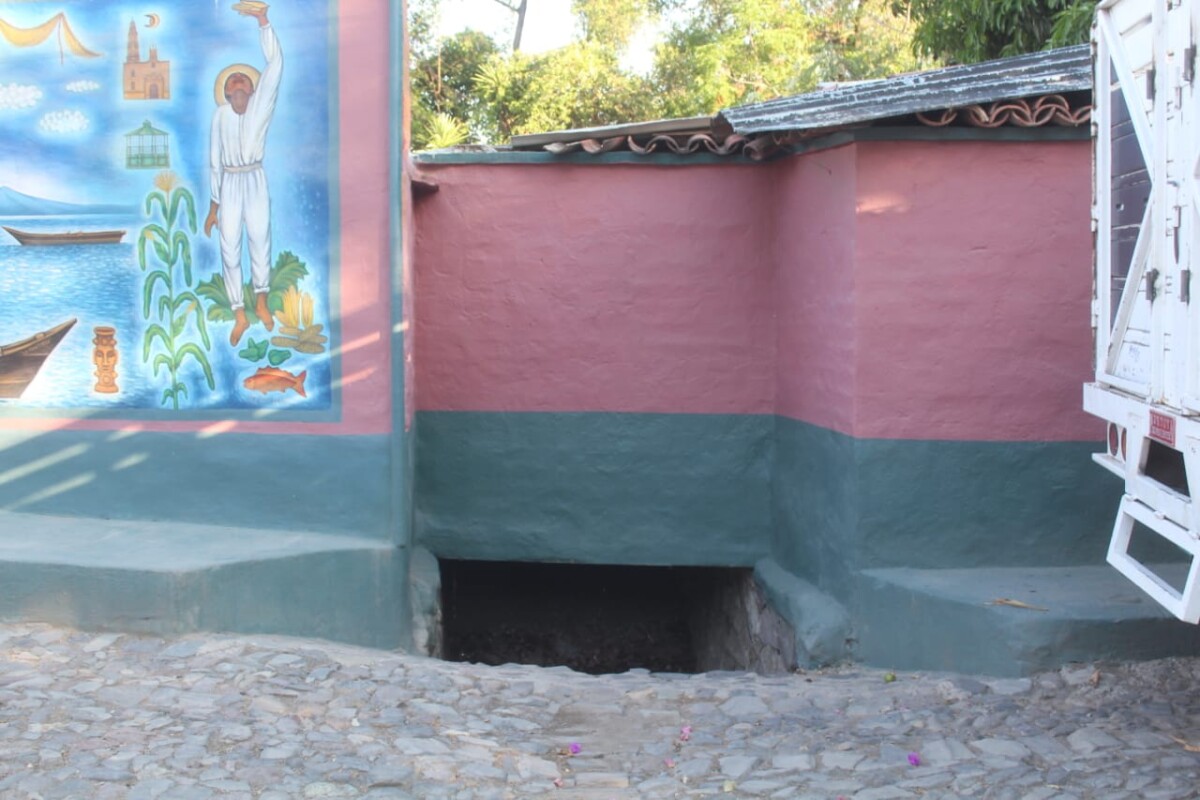
Bridge between Rio Zula and Tio Domingo, which is still obstructed by debris from the mudslides. Photo: Sofia Medeles.
The second is located in the area known as «three bridges,» which only needs the usual drainage since it was not affected by the landslides of last October 2021.
«Most of them have already been cleared, there is still a bit of work to be done, but they are free now, they are ready for the rainy season and will not have any problems,» concluded Maximiano Macias.
However, as of Sunday, 22 May,Laguna observed large boulders and rocks in the underpass at Sendero Christina, which serves several farms and ranches. The area was surrounded by security tape and large piles of debris had been cleared to one side of the road..
© 2016. Todos los derechos reservados. Semanario de la Ribera de Chapala

